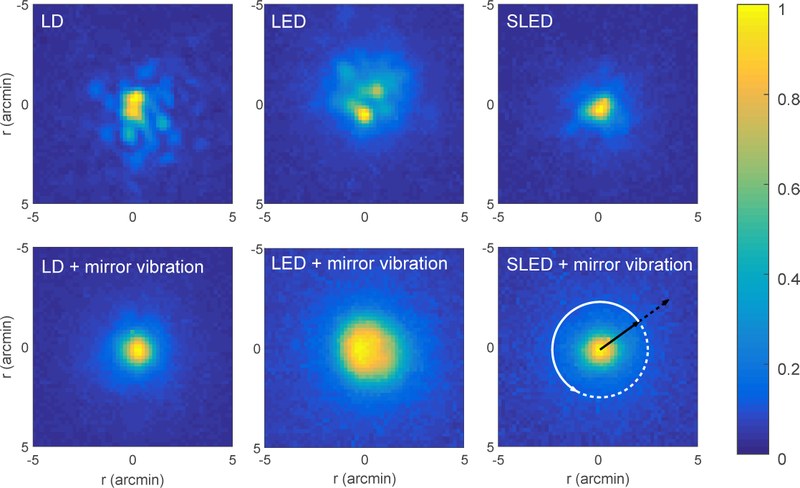"Experimental study of speckle generated by semiconductor light sources: application in double-pass images",
Jan 23, 2020
Herbert Donatus Halpaap defended his thesis co-directed by Cristina Masoller and Meritxell Vilaseca Ricart on December 9 at the Terrassa Campus entitled "Experimental study of speckle generated by semiconductor light sources: application in double-pass images", the thesis presents a study on the effect of a vibrating mirror to reduce speckle interferometry in lasers
With the double pass (DP) technique it is possible to quantify the optical quality of a patient’s eye by measuring its point spread function. Due to the low reflectivity of the retina a high-intensity, point-like illumination source is required. Usually laser diodes (LDs) are used, but the coherent laser light produces speckle, an interference phenomenon that deteriorates image quality and can make DP images difficult or impossible to interpret. A low-cost solution to reduce speckle in DP imaging is to include a vibrating mirror in the optical path of the system and average over the different speckle realizations. However, vibrating mechanical parts are undesired because they limit longevity and reliability of medical equipment.
The goal of this thesis is to find an inexpensive non-mechanical solution for speckle reduction in DP imaging based on low-coherence semiconductor light sources. We compare an LD, a lightemitting diode (LED) and a superluminescent diode (SLED) in terms of speckle formation, cost and usability in DP systems. We find that the SLED is a good alternative to LD illumination, as the amount of speckle in the image is almost as low as that obtained with an LD and a vibrating mirror in the beam path.
However, the SLED is not a low-cost solution. In order to identify a cost-efficient all-optical solution, we analyze the speckle generated by an LD as a function of its pump current. Our experiments suggest that driving the LD below the lasing threshold can be an inexpensive solution for speckle reduction. While undesired in many imaging applications, speckle can also contain useful information that is exploited, e.g., in blood flow analysis or for reconstruction of the object that generates the speckle pattern. We find that adjusting the pump current of an LD and the exposure time of the image acquisition system can be a simple and effective way to increase or reduce the amount of speckle by tailoring the coherence of light used for imaging. In particular, we identify conditions that allow to record images with similar average intensity, but with speckle contrast values as low as 0.16, or as high as 0.99.

Share: